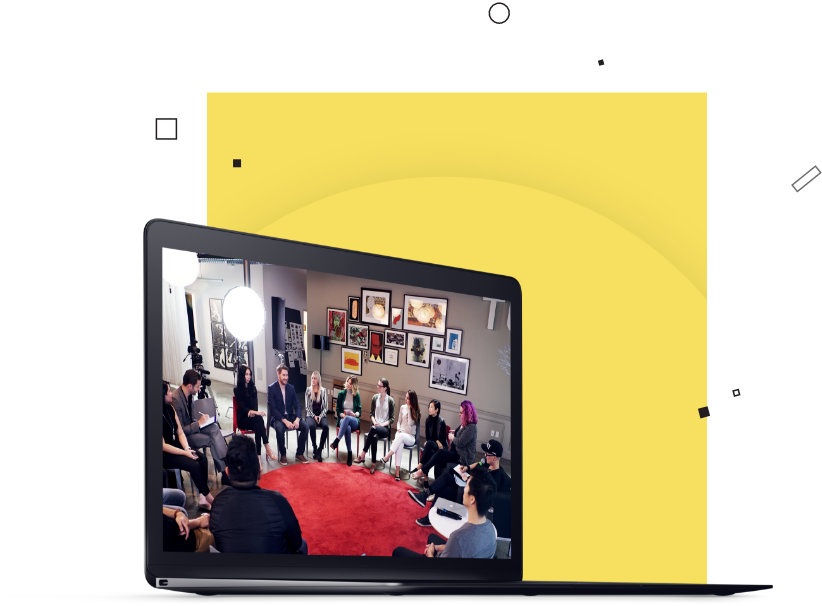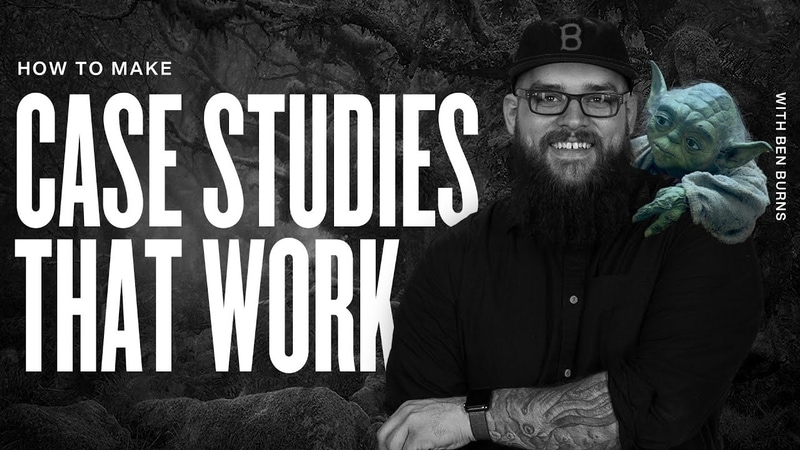Be The First To Know
Join Our Newsletter
The Art of Deconstruction
The Art of Deconstruction
I’ve been a creative professional for over 15 years working in branding, advertising, and design. With every project I’ve been a part of, I’m presented with new challenges I’ve never faced before. Needless to say, creative problem-solving has been the most common theme of my career.
One of the most valuable approaches to my work has been The Art of Deconstruction. This method helps me rapidly develop new skills and techniques to meet the demand of just about anything; like this interactive music video I created for Coldplay, or this viral video I made on YouTube that’s amassed over 3 million views.
I share the above two examples not to flex, but to tell you that I didn’t have the tools or knowledge before I started those projects. Instead, I had a meticulous approach to dissecting similar examples out there and applying what I learned directly to my work.
In short: I figured it out
My goal in this article is to share this process with you so you can develop your analytical lens to break down, understand, and learn from the success of others before you.
Here is the Art of Deconstruction in 5 Steps
1. Identify the goal
2. Research the subject and platform
3. Deconstruct, Analyze, & Understand
4. Emulate & Apply
5. Improve Upon
1. Identify Your Goal
What do you want to do? It’s very important to identify your goal before you start anything. (I talk all about this in another article.) This will help you hyper-focus, save time, and give you a clear filter to help you evaluate your efforts
Here are a Few Examples of Goals:
- Take great portrait photos
- Paint like an Impressionist
- Remodel my home office
- Give a presentation
2. Research
Find the top performers or best examples on a subject and particular platform.
- Who else has done this before?
- What do you like?
- What does everyone else like?
- What metrics are valuable to measure?
Once you’ve done a deep dive and can pick up on trends and patterns, select the cream of the crop. Pick the top 3-5 examples and include at least one anomaly—the example that performs as well as the rest, but breaks the common threads that link the others together. Anomalies will help to challenge the conclusions you might have from your findings to help you form a better hypothesis moving forward.
3. Deconstruct, Analyze, & Understand
If you’ve gone to art school, you might be familiar with the “masterwork copy” assignment. You take a popular piece of art and simply copy it. Stroke by stroke. Color to color. The purpose is to help students develop their skills quickly by understanding how the masters made such great pieces of art. Through this process, they train their eyes on how to see and their hands how to make. Students add new tools to their toolbox as they solve the challenges of their own work.
Whenever I Seek To Understand The Success Of Something, I Ask Myself A Few Questions:
- What are the main components and ingredients that make this up?
- What specific attributes make it effective?
- How did the person make it?
- How would you go about making that?
If We Were To Apply This Line Of Questioning To A Van Gogh Painting, You Might Analyze It This Way:
- The main components that make this up: the subject, Van Gogh, slightly off-center of the frame. He’s facing us 3/4 and is lit with a single key light.
- What makes it effective (beautiful): its organized rhythmic brush strokes, subtle muted split-complementary color palette, and high contrast at its focal point: his eyes and expression.
- How did he make it: Using oil paints, Van Gogh created his self-portrait using repeating patterns of brushstrokes that follow the contours of the shapes of the subject.
Become A Reverse Engineer
Being able to reverse engineer something is one of the most effective ways to understand how great things are made and why they work. This is The Art of Deconstruction and can be applied to anything:
- A dish from a Michelin star restaurant can be broken down into raw ingredients, seasoning, and cooking techniques.
- When studying a successful business, you can research their industry, the need they fill for their consumers, and their perceived brand in the marketplace.
- With a beautiful website, you can take note of the colors, typography, and hierarchy. You can even open the page source, and see every line of code it took to build it.
- When watching a film, you can break down the story arc, its characters, themes, cinematography, visual effects, and editing style.
- For comedy, you can analyze a standup artist’s jokes: their stories, cadence, and method of delivery.

4. Emulate & Apply
When you can decode the ingredients that makeup something great, you demystify its genius into elements you can understand. From there, you can begin to emulate and adopt these pieces into your own work.
To fully understand how something works, try to copy it. Just like the Masterwork assignment I mentioned, use each ingredient and follow each step until you’ve recreated one part or all of the work you’re studying. Based on the learning retention pyramid, this method of active learning will help you cement the information for you to use later.
“Isn’t that stealing?” – Every Creative Person
At this point, some of you might feel a little apprehensive towards this. Watch “Everything is a Remix”, then I’ll meet you back here.
5. Improve Upon
Don’t just take from culture; contribute to it. The last step of this process is to apply your newfound knowledge towards the goal you’ve identified in step 1. Take the most relevant elements of the best things you’ve consumed and improve them. Combine them together. Make something new built off of what came before you.
Here Are A Couple Of Ways To Do That:
- Add your POV. What’s your unique perspective on the subject matter? What can you add to the conversation?
- Remix it. “This meets that”. “It’s the Uber for…”
- Go more in-depth. If you’ve found an article that’s 2000 words on how to tidy up, then write an article that’s 5000 words and get into the nuances of organizing and color-coding your shirts.
- Find the white space. What aren’t they doing?
Prove It. Show Me.
At the beginning of this article, I shared a link to a video I made earlier in the year. It’s a really simple desk tour video where I walk people through my home office. The video was the third piece of content I released on my channel when I had just a few hundred subscribers. Since uploading, it’s earned over 3 million views, 44,000 subscribers, and surpassed every expectation I could have set for it.
I hope this breakdown of The Art of Deconstruction was helpful for you. While this process can greatly improve the quality of your work, there’s no guarantee of success. You still have to pray to the algorithm gods for that—just kidding.
In all seriousness, I’ve used this approach throughout my life towards so many things: commercials, content, branding, business, cooking, fitness, and beyond. I hope that by applying these steps into your life and creative process, you can make great work!
This presentation was originally given as a 1-hour lecture inside The Futur Pro Member Group.
Here’s How I Made This Video Using The Art Of Deconstruction:
1. Identify the goal: My goal was to clean up my messy workspace, and I was inspired to document the process.
2. Research the subject and platform: I started to look for ideas on YouTube and Pinterest and found that there was a whole community of people who openly shared their spaces and ideas around interior design. Upon discovering a well of great videos on YouTube, I decided that I could probably make own.
3. Deconstruct, Analyze, & Understand: In my research, I found dozens of examples that inspired me. I took the chill vibes and practical information of David Zhang’s videos. I looked to the amazing storytelling and cinematography of Matt D’Vella, and formed a script similar to his writing style. The practical organization of Casey Neistat’s New York studio helped me sort my gear, while I fell in love with the dark grey aesthetic of Becki & Chris’ living spaces. I realized that with much of this content, the ones that performed well all showcased components of DIY building and used very affordable (IKEA) furniture.
4. Emulate & Apply: With all the pieces of new information and examples I gathered, I began the process of designing my home office and crafting a video around it. I took all the best qualities that I liked from my research and applied them to my work. I also took into consideration all of the keywords and tags used to describe all of the popular videos in this space. Given that YouTube is the second largest search engine in the world, I wanted to optimize my video’s performance in search.
5. Improve Upon: I took the “remix” approach and applied all the best parts of the content I admired. I also found some “white space” in the genre of desk tours. Outside of this video from Chari Marie TV, there weren’t many videos that were created for or by designers. I decided to appeal to that niche when crafting my video and explaining how I organized my space.
I also wanted to “go more in-depth” because I realized that outside of YouTube, there weren’t many other resources covering the desk tour space. So I wrote a companion article to the video and created a page on Kit, all to help with Google rankings.

I hope this breakdown of The Art of Deconstruction was helpful for you. While this process can greatly improve the quality of your work, there’s no guarantee of success. You still have to pray to the algorithm gods for that—just kidding.
In all seriousness, I’ve used this approach throughout my life towards so many things: commercials, content, branding, business, cooking, fitness, and beyond. I hope that by applying these steps into your life and creative process, you can make great work!
This presentation was originally given as a 1-hour lecture inside The Futur Pro Member Group.
If you’re interested in having Matthew speak at your event, or want to sponsor his content, please send all business inquiries to [email protected].
The Art of Deconstruction

How can you go from being a consumer of great work to being someone who makes it?
How can you go from being a consumer of great work to being someone who makes it?
The Art of Deconstruction
I’ve been a creative professional for over 15 years working in branding, advertising, and design. With every project I’ve been a part of, I’m presented with new challenges I’ve never faced before. Needless to say, creative problem-solving has been the most common theme of my career.
One of the most valuable approaches to my work has been The Art of Deconstruction. This method helps me rapidly develop new skills and techniques to meet the demand of just about anything; like this interactive music video I created for Coldplay, or this viral video I made on YouTube that’s amassed over 3 million views.
I share the above two examples not to flex, but to tell you that I didn’t have the tools or knowledge before I started those projects. Instead, I had a meticulous approach to dissecting similar examples out there and applying what I learned directly to my work.
In short: I figured it out
My goal in this article is to share this process with you so you can develop your analytical lens to break down, understand, and learn from the success of others before you.
Here is the Art of Deconstruction in 5 Steps
1. Identify the goal
2. Research the subject and platform
3. Deconstruct, Analyze, & Understand
4. Emulate & Apply
5. Improve Upon
1. Identify Your Goal
What do you want to do? It’s very important to identify your goal before you start anything. (I talk all about this in another article.) This will help you hyper-focus, save time, and give you a clear filter to help you evaluate your efforts
Here are a Few Examples of Goals:
- Take great portrait photos
- Paint like an Impressionist
- Remodel my home office
- Give a presentation
2. Research
Find the top performers or best examples on a subject and particular platform.
- Who else has done this before?
- What do you like?
- What does everyone else like?
- What metrics are valuable to measure?
Once you’ve done a deep dive and can pick up on trends and patterns, select the cream of the crop. Pick the top 3-5 examples and include at least one anomaly—the example that performs as well as the rest, but breaks the common threads that link the others together. Anomalies will help to challenge the conclusions you might have from your findings to help you form a better hypothesis moving forward.
3. Deconstruct, Analyze, & Understand
If you’ve gone to art school, you might be familiar with the “masterwork copy” assignment. You take a popular piece of art and simply copy it. Stroke by stroke. Color to color. The purpose is to help students develop their skills quickly by understanding how the masters made such great pieces of art. Through this process, they train their eyes on how to see and their hands how to make. Students add new tools to their toolbox as they solve the challenges of their own work.
Whenever I Seek To Understand The Success Of Something, I Ask Myself A Few Questions:
- What are the main components and ingredients that make this up?
- What specific attributes make it effective?
- How did the person make it?
- How would you go about making that?
If We Were To Apply This Line Of Questioning To A Van Gogh Painting, You Might Analyze It This Way:
- The main components that make this up: the subject, Van Gogh, slightly off-center of the frame. He’s facing us 3/4 and is lit with a single key light.
- What makes it effective (beautiful): its organized rhythmic brush strokes, subtle muted split-complementary color palette, and high contrast at its focal point: his eyes and expression.
- How did he make it: Using oil paints, Van Gogh created his self-portrait using repeating patterns of brushstrokes that follow the contours of the shapes of the subject.
Become A Reverse Engineer
Being able to reverse engineer something is one of the most effective ways to understand how great things are made and why they work. This is The Art of Deconstruction and can be applied to anything:
- A dish from a Michelin star restaurant can be broken down into raw ingredients, seasoning, and cooking techniques.
- When studying a successful business, you can research their industry, the need they fill for their consumers, and their perceived brand in the marketplace.
- With a beautiful website, you can take note of the colors, typography, and hierarchy. You can even open the page source, and see every line of code it took to build it.
- When watching a film, you can break down the story arc, its characters, themes, cinematography, visual effects, and editing style.
- For comedy, you can analyze a standup artist’s jokes: their stories, cadence, and method of delivery.

4. Emulate & Apply
When you can decode the ingredients that makeup something great, you demystify its genius into elements you can understand. From there, you can begin to emulate and adopt these pieces into your own work.
To fully understand how something works, try to copy it. Just like the Masterwork assignment I mentioned, use each ingredient and follow each step until you’ve recreated one part or all of the work you’re studying. Based on the learning retention pyramid, this method of active learning will help you cement the information for you to use later.
“Isn’t that stealing?” – Every Creative Person
At this point, some of you might feel a little apprehensive towards this. Watch “Everything is a Remix”, then I’ll meet you back here.
5. Improve Upon
Don’t just take from culture; contribute to it. The last step of this process is to apply your newfound knowledge towards the goal you’ve identified in step 1. Take the most relevant elements of the best things you’ve consumed and improve them. Combine them together. Make something new built off of what came before you.
Here Are A Couple Of Ways To Do That:
- Add your POV. What’s your unique perspective on the subject matter? What can you add to the conversation?
- Remix it. “This meets that”. “It’s the Uber for…”
- Go more in-depth. If you’ve found an article that’s 2000 words on how to tidy up, then write an article that’s 5000 words and get into the nuances of organizing and color-coding your shirts.
- Find the white space. What aren’t they doing?
Prove It. Show Me.
At the beginning of this article, I shared a link to a video I made earlier in the year. It’s a really simple desk tour video where I walk people through my home office. The video was the third piece of content I released on my channel when I had just a few hundred subscribers. Since uploading, it’s earned over 3 million views, 44,000 subscribers, and surpassed every expectation I could have set for it.
I hope this breakdown of The Art of Deconstruction was helpful for you. While this process can greatly improve the quality of your work, there’s no guarantee of success. You still have to pray to the algorithm gods for that—just kidding.
In all seriousness, I’ve used this approach throughout my life towards so many things: commercials, content, branding, business, cooking, fitness, and beyond. I hope that by applying these steps into your life and creative process, you can make great work!
This presentation was originally given as a 1-hour lecture inside The Futur Pro Member Group.
Here’s How I Made This Video Using The Art Of Deconstruction:
1. Identify the goal: My goal was to clean up my messy workspace, and I was inspired to document the process.
2. Research the subject and platform: I started to look for ideas on YouTube and Pinterest and found that there was a whole community of people who openly shared their spaces and ideas around interior design. Upon discovering a well of great videos on YouTube, I decided that I could probably make own.
3. Deconstruct, Analyze, & Understand: In my research, I found dozens of examples that inspired me. I took the chill vibes and practical information of David Zhang’s videos. I looked to the amazing storytelling and cinematography of Matt D’Vella, and formed a script similar to his writing style. The practical organization of Casey Neistat’s New York studio helped me sort my gear, while I fell in love with the dark grey aesthetic of Becki & Chris’ living spaces. I realized that with much of this content, the ones that performed well all showcased components of DIY building and used very affordable (IKEA) furniture.
4. Emulate & Apply: With all the pieces of new information and examples I gathered, I began the process of designing my home office and crafting a video around it. I took all the best qualities that I liked from my research and applied them to my work. I also took into consideration all of the keywords and tags used to describe all of the popular videos in this space. Given that YouTube is the second largest search engine in the world, I wanted to optimize my video’s performance in search.
5. Improve Upon: I took the “remix” approach and applied all the best parts of the content I admired. I also found some “white space” in the genre of desk tours. Outside of this video from Chari Marie TV, there weren’t many videos that were created for or by designers. I decided to appeal to that niche when crafting my video and explaining how I organized my space.
I also wanted to “go more in-depth” because I realized that outside of YouTube, there weren’t many other resources covering the desk tour space. So I wrote a companion article to the video and created a page on Kit, all to help with Google rankings.

I hope this breakdown of The Art of Deconstruction was helpful for you. While this process can greatly improve the quality of your work, there’s no guarantee of success. You still have to pray to the algorithm gods for that—just kidding.
In all seriousness, I’ve used this approach throughout my life towards so many things: commercials, content, branding, business, cooking, fitness, and beyond. I hope that by applying these steps into your life and creative process, you can make great work!
This presentation was originally given as a 1-hour lecture inside The Futur Pro Member Group.
If you’re interested in having Matthew speak at your event, or want to sponsor his content, please send all business inquiries to [email protected].

Matthew Encina is an award-winning creative director of branding, interactive experiences, and video content for Fortune 500 brands, music artists, and video games. For over ten years he has been working on top-tier campaigns at LA’s premier design studios and agencies.






.webp)



















